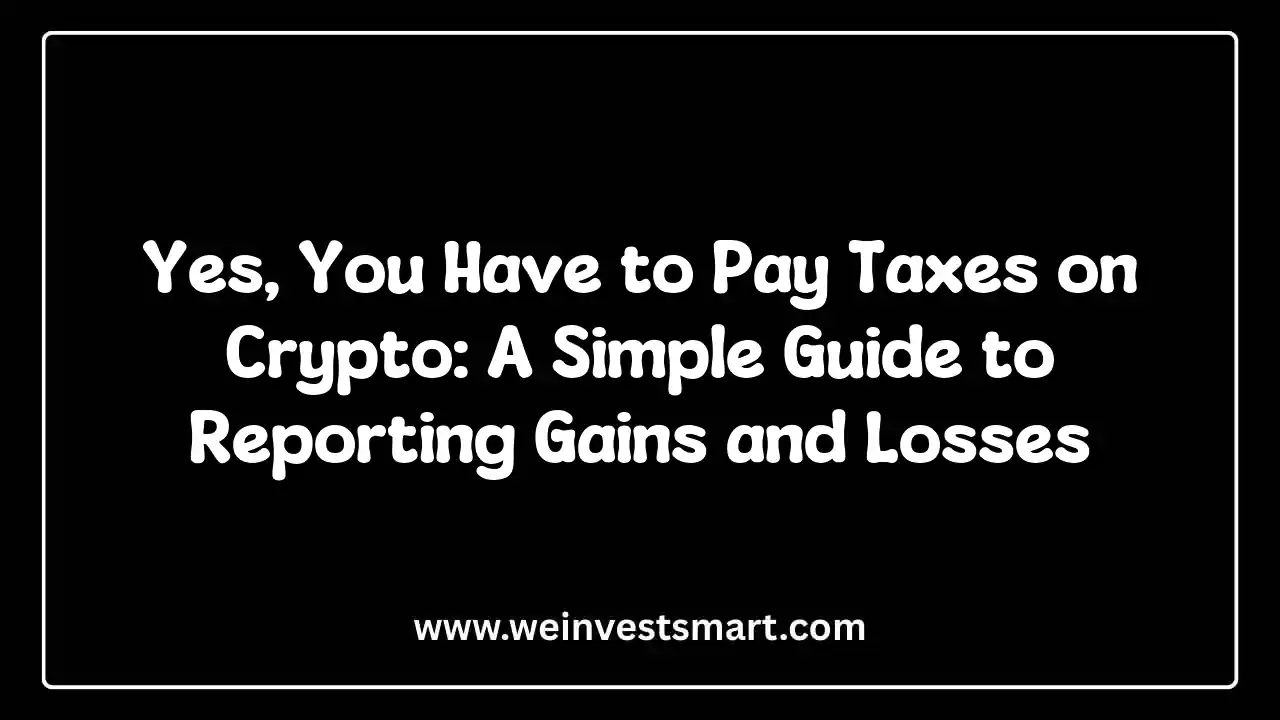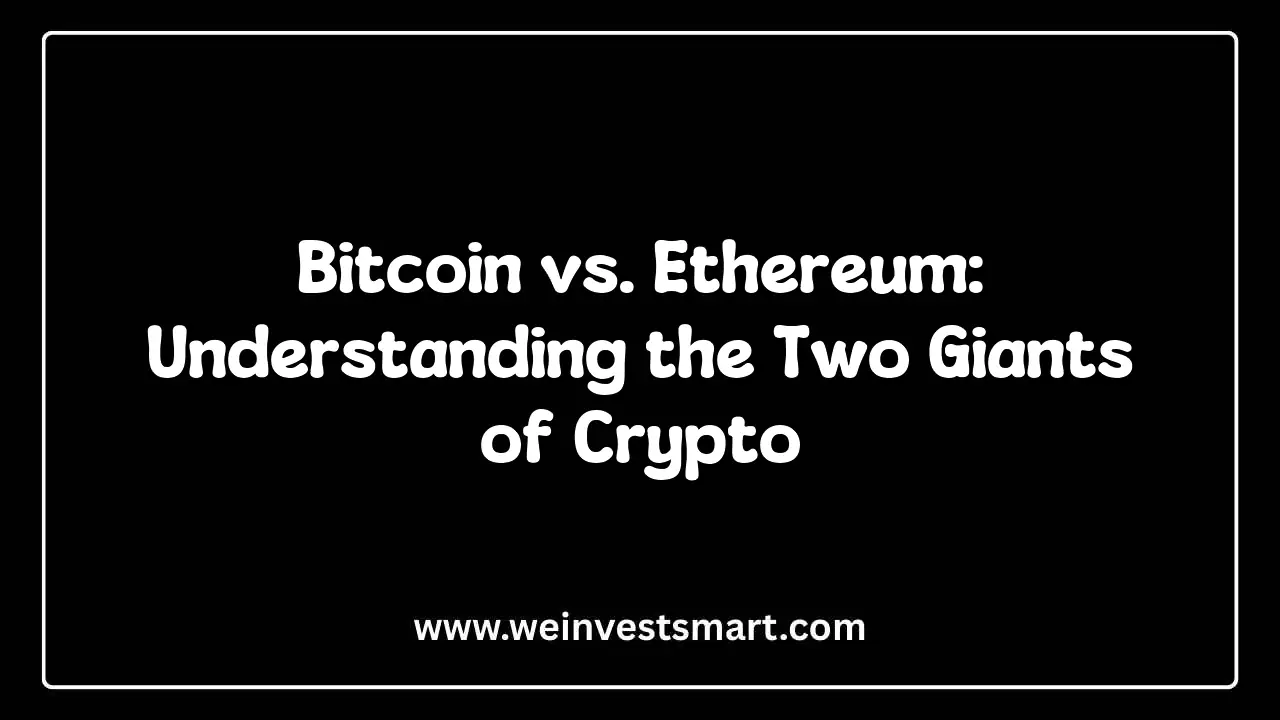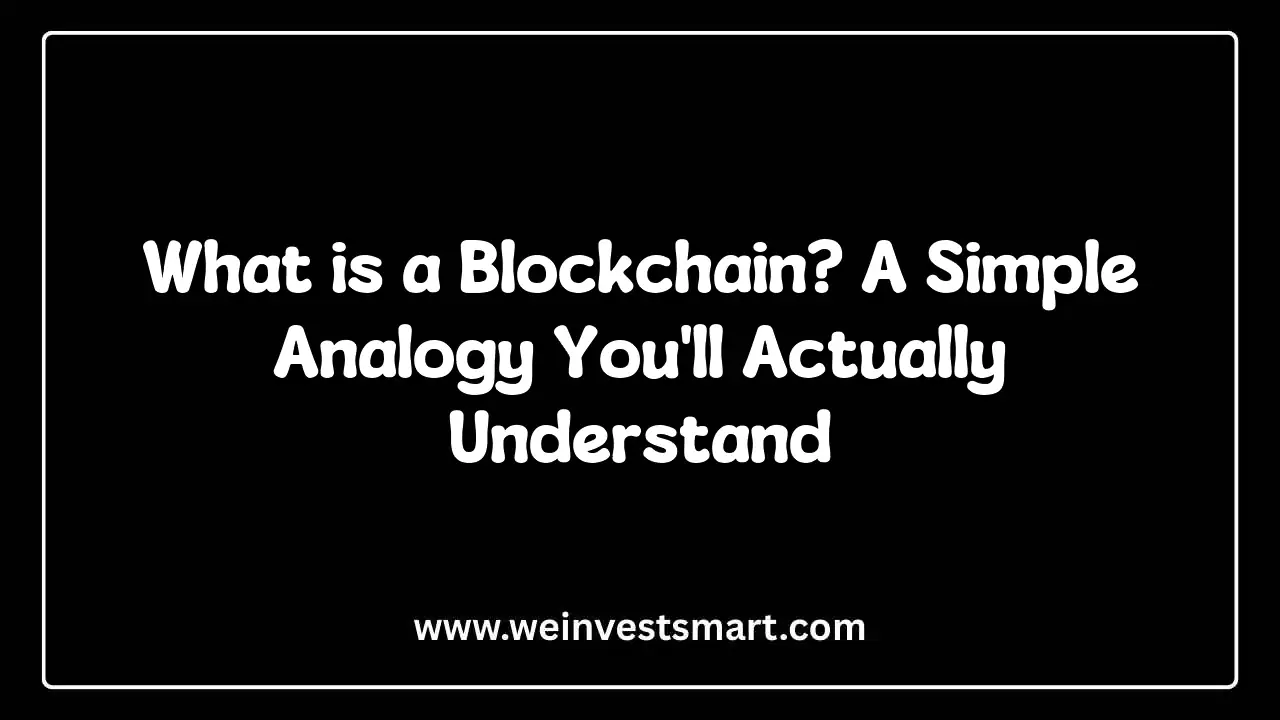· WeInvestSmart Team · crypto-education · 11 min read
What is DeFi? A Look at the Future of Decentralized Finance
An introductory piece to the world of DeFi (Decentralized Finance). Explain concepts like lending, borrowing, and yield farming on the blockchain, framing it as a potential future alternative to traditional banking.
Most people believe that the financial system—with its towering banks, complex regulations, and trusted institutions—is a permanent fixture of the modern world. They think of their bank as a secure vault and the stock market as a well-oiled machine, both managed by experts in suits.
But here’s the uncomfortable truth: this entire system, which we call Traditional Finance (or “TradFi”), is built on a foundation of intermediaries. It’s a series of gatekeepers—banks, brokers, clearinghouses, and payment processors—that stand between you and your money, each taking a cut and adding friction.
We live in a world where sending a simple payment across borders can take days and cost a small fortune. We accept that getting a loan requires mountains of paperwork and a judgment from a centralized credit bureau. We’ve been conditioned to believe this is the only way.
But what if we told you there’s a parallel financial system being built? One with no banks, no brokers, and no central authorities. What if you could borrow, lend, and trade assets with anyone in the world, instantly, with just an internet connection? Here’s where things get interesting.
This isn’t a futuristic fantasy; it’s happening right now. It’s called Decentralized Finance (DeFi), and it leverages the power of blockchain technology to create a more open, efficient, and accessible financial system for everyone. And this is just a very long way of saying that the very definition of a “financial service” is being rewritten by code.
The Foundation: Why We Needed an Alternative in the First Place
Before we can understand DeFi, we must first understand what it’s decentralizing from. The current financial system, for all its strengths, has inherent flaws that stem from its centralized nature.
Going straight to the point, Traditional Finance (TradFi) operates on a model of trusted intermediaries. You trust your bank to hold your deposits. You trust your broker to execute your trades. You trust a central payment processor to handle your credit card transactions. This trust is the glue that holds the system together, but it comes at a cost.
Think about the last time you:
- Sent money abroad: You likely paid a high fee and waited several business days for the transfer to clear through a network of correspondent banks.
- Applied for a loan: You were judged based on a credit score compiled by a handful of private companies, a process that can be opaque and exclusionary.
- Traded stocks: Your trade didn’t settle instantly. It went through a complex clearing and settlement process that takes two business days (T+2), introducing counterparty risk.
The funny thing is that we’ve accepted these inefficiencies as normal. We’ve gotten used to a system where we don’t truly control our own assets; we merely have a claim on them, held by a custodian. This system is permissioned, meaning institutions can decide who gets to participate.
And this is just a very long way of saying that TradFi is slow, expensive, and exclusive. DeFi was born from a simple but powerful question: what if we could replace this system of trust in institutions with a system of trust in code?
The Engine of DeFi: Smart Contracts are the Robot Bankers
To build a financial system without intermediaries, you need a new kind of engine. In DeFi, that engine is the smart contract.
Most people hear “contract” and think of a legal document filled with jargon. But in the world of blockchain, a smart contract is something very different. Going straight to the point, a smart contract is a self-executing program stored on a blockchain, with the terms of an agreement written directly into code. It’s a digital agreement that automatically enforces its own rules.
Think of it this way:
- A traditional contract is a set of promises. A smart contract is a set of commands.
- A traditional contract says, “If Alice pays Bob, then Bob promises to give Alice the car title.” Enforcement requires lawyers and courts.
- A smart contract says, “IF Alice sends 10 ETH to this contract, THEN automatically transfer ownership of the digital car title NFT to Alice’s wallet.” The execution is guaranteed by the code.
Here’s where things get interesting. Because these smart contracts run on a decentralized blockchain like Ethereum, they inherit its core properties:
- Immutable: Once deployed, the code cannot be changed.
- Transparent: Anyone can view the code and verify its logic.
- Unstoppable: The contract will run exactly as programmed, without the possibility of censorship or downtime, as long as the underlying blockchain is running.
This sounds like a trade-off because you’re trusting code instead of a reputable institution, but it’s actually the entire point. We covet this system because it removes the need for a trusted third party. The smart contract is the trusted third party. It’s an automated, unbiased, and transparent financial agent that works for everyone, 24/7.
The DeFi Universe: Rebuilding Wall Street with “Money Legos”
Once you have these powerful smart contracts, you can start to recreate traditional financial services in a decentralized way. DeFi protocols are often called “money legos” because they are open-source and can be combined to create increasingly complex financial products.
Let’s explore the core building blocks of the DeFi world.
1. Lending and Borrowing: Your Bank Without a Banker
This is the simplest and most foundational pillar of DeFi. In TradFi, you deposit money in a bank, which then lends it out at a higher interest rate. In DeFi, this process is handled by a lending pool, which is essentially a giant pot of crypto assets managed by a smart contract.
Here’s how it works:
- Lenders: You can deposit your crypto assets (like the stablecoin USDC or Ethereum) into a lending pool. In return, you start earning interest immediately, paid out by the protocol. You become the bank.
- Borrowers: You can borrow assets from that same pool. To do so, you must first deposit other crypto assets as collateral. This collateral is locked in the smart contract. A key difference from TradFi is that these loans are typically overcollateralized, meaning you have to lock up more value than you borrow (e.g., provide $150 worth of ETH to borrow $100 of USDC).
The entire process is automated. Interest rates are often determined algorithmically based on supply and demand within the pool. If the value of a borrower’s collateral falls below a certain threshold, the smart contract automatically liquidates it to repay the loan, protecting the lenders. There are no credit checks, no loan applications, and no waiting for approval.
2. Decentralized Exchanges (DEXs): Trading Without a Broker
In traditional finance, if you want to trade stocks, you go through a centralized exchange like the NYSE via a brokerage. They use a system called an order book, matching individual buy and sell orders.
DeFi’s answer to this is the Decentralized Exchange (DEX). Most modern DEXs don’t use order books. Instead, they use a revolutionary concept called an Automated Market Maker (AMM).
Going straight to the point, an AMM is a smart contract that holds pools of two or more different tokens, creating a liquidity pool.
- The Action: Anyone can become a liquidity provider (LP) by depositing an equal value of two tokens into a pool (e.g., $500 of ETH and $500 of USDC).
- The Result: Traders can then trade against this pool. If you want to buy ETH with your USDC, you simply send your USDC to the pool’s smart contract, and it sends ETH back to you. The price is determined by a mathematical formula based on the ratio of the two tokens in the pool.
- The Incentive: The people who provided the liquidity (the LPs) earn a small fee from every trade that happens in their pool, generating passive income.
This is a very long way of saying that instead of trading with another person, you are trading with a pool of assets managed by a smart contract.
3. Yield Farming: The High-Stakes Quest for Returns
Once you have lending, borrowing, and trading, you can start combining them in complex ways to maximize your returns. This is the essence of yield farming.
Going straight to the point, yield farming is the practice of strategically moving your crypto assets across various DeFi protocols to earn the highest possible rewards. It’s like being a financial nomad, constantly searching for the most fertile ground to grow your capital. A yield farmer might:
- Deposit stablecoins into a lending protocol like Aave to earn interest.
- Take the interest-bearing tokens they receive and deposit them into a DEX liquidity pool to earn trading fees.
- Stake the liquidity pool tokens they receive into another protocol to earn that protocol’s governance token as an additional reward.
What is DeFi FAQ
What is DeFi?
DeFi, or Decentralized Finance, is a blockchain-based financial system that operates without traditional intermediaries like banks.
How does DeFi work?
DeFi works through smart contracts on blockchains like Ethereum, enabling lending, borrowing, trading, and other financial services peer-to-peer.
What are the benefits of DeFi?
Benefits include accessibility, transparency, lower costs, and financial inclusion without needing bank approval.
What are the risks of DeFi?
Risks include smart contract vulnerabilities, volatility, regulatory uncertainty, and potential loss of funds.
How do I get started with DeFi?
Start by setting up a crypto wallet, acquiring some cryptocurrency, and using DeFi platforms like Uniswap or Aave for basic transactions.
You may also be interested in: Yes, You Have to Pay Taxes on Crypto: A Simple Guide to Reporting Gains and Losses
Yield farming can generate incredibly high returns, often expressed as an Annual Percentage Yield (APY) that can reach triple digits or more. However, this high reward comes with significantly higher risk, including smart contract vulnerabilities and a concept known as “impermanent loss” for liquidity providers.
The Antidote: The Promises and Perils of an Open Financial System
DeFi is not a utopia. It is a nascent technology with sharp edges. To embrace it, we must be clear-eyed about both its revolutionary potential and its current dangers.
The Promises: A More Accessible and Transparent Future
- Permissionless Access: Anyone with a crypto wallet and an internet connection can access DeFi services. There are no gatekeepers, no geographic borders, and no need for a government ID.
- Transparency: Every transaction and every smart contract is recorded on a public blockchain, open for anyone to audit. This is the polar opposite of the opaque ledgers of traditional finance.
- Self-Custody: In DeFi, you are your own bank. You hold your assets in your own wallet, secured by your private keys. No institution can freeze or seize your funds without your keys.
- Efficiency and Speed: By replacing manual processes and intermediaries with automated smart contracts, DeFi can offer financial services that are faster and cheaper.
The Perils: Navigating a Digital Wild West
- Smart Contract Risk: The code is the law, but what if the code has a bug? Flaws in smart contracts can be exploited by hackers, leading to catastrophic losses with little to no recourse.
- Extreme Volatility: Most DeFi applications are built around crypto assets that are incredibly volatile. The value of your collateral or your investment can plummet in minutes.
- Complexity and User Experience: DeFi is still incredibly difficult for beginners to navigate. One wrong click, like sending funds to the wrong address, can result in a permanent loss of funds.
- Regulatory Uncertainty: Governments around the world are still trying to figure out how to regulate this new financial paradigm. The rules are unclear and subject to change, creating risk for participants.
You may also be interested in: Yes, You Have to Pay Taxes on Crypto: A Simple Guide to Reporting Gains and Losses
The Bottom Line: Finance is Becoming a Technology
The formula for the future of finance is no longer just about institutions; it’s about protocols. (Global Connectivity + Programmable Money) - (Intermediaries + Friction) = A New Financial System
You can’t stop a technological revolution. You can’t put the genie of decentralization back in the bottle. But you can understand its mechanics, appreciate its potential, and be brutally honest about its risks.
And this is just a very long way of saying that DeFi is the inevitable collision of finance and open-source software. It is the ambitious, messy, and exhilarating process of rebuilding Wall Street’s core functions on a transparent, global, and programmable foundation. It may not replace traditional finance overnight, but it is presenting a powerful alternative that will force the entire industry to evolve or risk becoming obsolete.
This article is for educational purposes only and should not be considered personalized financial advice. The DeFi space is highly volatile and risky; always do your own research and consider consulting with a financial advisor for guidance specific to your situation.



